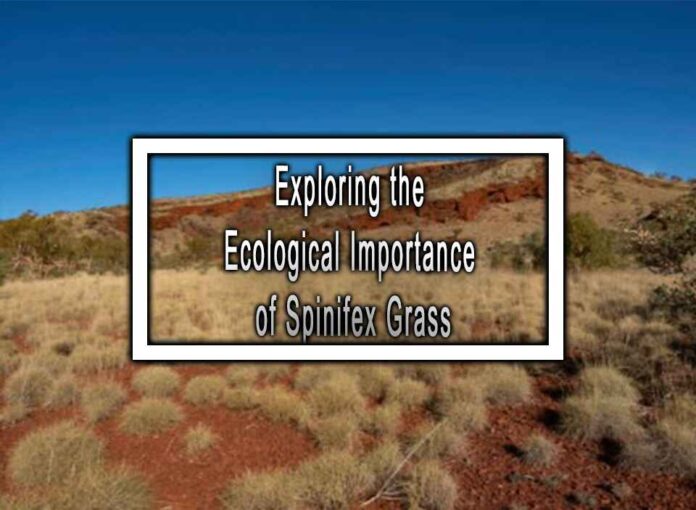Spinifex grass, belonging to the genus Triodia, is a group of hardy, tussock-forming grasses found in arid and semi-arid regions of Australia, Asia, and Africa. These grasses play a significant ecological role in these harsh environments. Here’s an exploration of the ecological importance of spinifex grass:
Soil Stabilization:
- Spinifex grasses have an extensive root system that helps bind the soil together. In regions prone to erosion, such as sand dunes and desert landscapes, spinifex plays a crucial role in stabilizing the soil, preventing sand movement, and reducing desertification.

- Spinifex grasses have an extensive root system that helps bind the soil together. In regions prone to erosion, such as sand dunes and desert landscapes, spinifex plays a crucial role in stabilizing the soil, preventing sand movement, and reducing desertification.
Habitat Creation:
- Spinifex grasses create complex microhabitats within their tussocks. These microhabitats provide shelter, nesting sites, and protection from harsh environmental conditions for a variety of small desert-dwelling animals, including insects, reptiles, and small mammals.
Food Source:
- Spinifex seeds serve as a food source for various wildlife species. Birds, rodents, and insects feed on the seeds, contributing to the local food web.
Fire Resistance:
- Some species of spinifex grasses have adapted to fire-prone environments. Their dense, tussocky growth helps protect their inner tissues from the heat of wildfires, allowing the plants to regenerate after the fire has passed.
Nutrient Cycling:
- The decomposition of spinifex grasses and the organic matter they provide to the soil contribute to nutrient cycling in arid ecosystems. This can improve soil fertility over time and support plant growth.
Water Capture:
- Spinifex grasses are known for their ability to capture and retain moisture. They are sometimes referred to as “desert wells” because their tussocks can capture dew and rainfall, providing a source of water for animals and insects in arid regions.
Biodiversity Support:
- The presence of spinifex grasses can enhance biodiversity by providing shelter and forage for a variety of desert-adapted species. This includes insects, reptiles like the spinifex hopping mouse, and birds.
Carbon Storage:
- These grasses contribute to carbon sequestration by storing carbon in their above-ground and below-ground biomass. This helps mitigate the effects of climate change by removing carbon dioxide from the atmosphere.
Traditional Uses:
- Indigenous communities in Australia have used spinifex grasses for various purposes, including for shelter construction, fire-making, and as a source of fiber for weaving.
Erosion Control:
- In coastal regions, some species of spinifex grasses are used for sand dune stabilization and coastal erosion control. Their deep root systems help prevent sand from shifting and damaging coastal ecosystems.
In summary, spinifex grasses are essential components of arid and semi-arid ecosystems, playing a vital role in soil stabilization, habitat creation, nutrient cycling, and supporting a range of desert-adapted wildlife. Their adaptations to extreme environments make them invaluable contributors to the ecological health of these regions.











